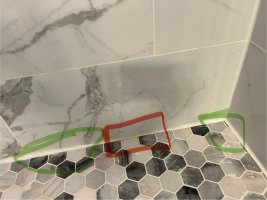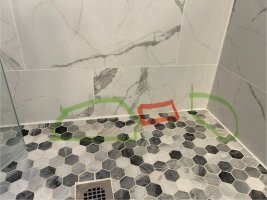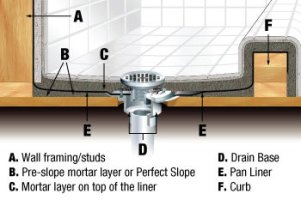There are two schools of thought. Some prefer grout at the changes of plane, like where the floor meets the wall to keep things consistent, though you run the risk of cracking of the house settles any. Others prefer color matched silicone to avoid cracking. To me preferred is color matched silicone.
It could be a few things. Since it's PVC liner, you'll have a pre-slope, on top of which lays the liner. Then on top of that lays the final layer of mud. It's possible one of the layers ended up a little lower in that area, and that where the water accumulates before (hopefully) continuing on its way down to the drain's weep holes. It's possible that area ended up with less than ideal slope and it's just draining a little slower.
Do you know if a flood test was carried out to ensure no leaks? Something like 24 hrs of no water level change.
Either way, you could try siliconing the corner but it's possible the lower spot is below the tile meaning it could still keep wet under the silicone until it eventually drains out.



